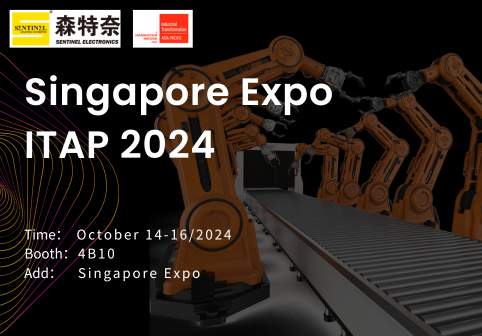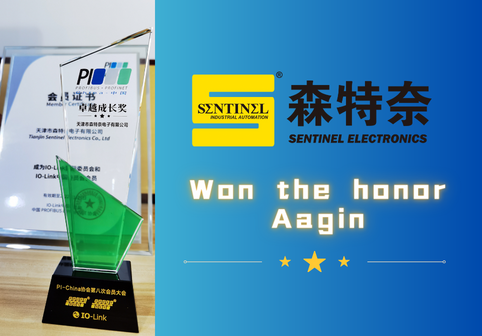SENTINEL IO-Link History
In 2021, SENTINEL was invited by the IO-Link Committee to participate in translating the book "IO-Link: The DNA of Industry 4.0." After three years of relentless effort, this book has finally been published. This article will review SENTINEL's journey in IO-Link product development and showcase the achievements in this field.

SENTINEL's Development of IO-Link
Decision to Develop
IO-Link products were first developed in 2008, designed for communication between PLCs and sensors and actuators. It standardized the interface of all sensors and actuators, digitized the signal transmission between PLCs and sensors/actuators, and made equipment pre-maintenance possible.
By 2018, 124 companies had joined the IO-Link association, with over 3.5 million nodes operating globally.
Against this background, SENTINEL decided to invest in the development of IO-Link products in 2018.

Overcoming Challenges in Development
The SENTINEL team spent nearly two years studying and learning IO-LINK standards and specifications. However, when they began development in 2019, Germany temporarily halted the sale of the IO-Link protocol stack, forcing the SENTINEL team to write the code stack themselves. This was a massive workload, but the team successfully completed the software development.
In terms of hardware design, the open IO-Link standard meant many semiconductor companies were producing PHY chips, but each chip had different descriptions for short-circuit protection and load current. SENTINEL resolved these issues by testing and switching suppliers, ensuring the reliability of the hardware design.

Experience Summary and Process Improvement
Improving Manufacturing Processes
The key to manufacturing products is to strictly follow specifications and standards to ensure product quality and consistency. SENTINEL continuously improves processes and equipment by regularly analyzing production efficiency, yield, and process data. The introduction of automated equipment and tooling reduced human factors, enhancing production efficiency and product consistency.
Comprehensive Testing to Ensure Product Quality
All SENTINEL IO-Link products undergo rigorous testing before leaving the factory, simulating actual working conditions and networking with load power for more than 48 hours to ensure product reliability under various conditions.

All of SENTINEL's master and sub-station products have passed SGS's CE certification. In 2023, SENTINEL was awarded the Excellence Growth Award by the IO-Link Association, further proving the company's outstanding performance in this field. [SENTINEL Electronics Wins PI-China Association Excellence Growth Award]

Highlights
Solving Customer Problems
SENTINEL's IO-Link master station was successfully applied in BYD's battery raw material warehouse automation production line project. As of the customer's provided time, SENTINEL's IO-Link product failure rate was 0. Its high reliability and ease of use were highly praised by users, integrators, and developers. [BYD Battery Raw Material Warehouse Automation Production Line]

There are many types of sensors and actuators, and some sensors cannot achieve low power consumption due to their working principles, such as electromagnetic flow meters. SENTINEL encountered issues with high power consumption of imported sensors, which required higher performance from ordinary IO-Link master stations. Through experiments and in-depth understanding of IO-Link communication mechanisms, the team quickly resolved the issue of German electromagnetic flow meters not communicating properly with certain master station brands, solving customer problems and replacing imported products with domestic ones. [SENTINEL Provides Customized Solutions: Solving Communication Problems with Imported Flow Meters]
During the pandemic, delayed delivery of imported products caused many customers' project delays. However, SENTINEL's high-quality and timely delivery products helped customers solve their problems on time. Additionally, SENTINEL's products have received positive feedback in foreign trade.
Moving Forward and Continuous Innovation
New Product Development and Market Demand
In recent years, the State Administration of Work Safety has required enterprises to digitize and visualize monitoring points in flammable and explosive places. This demand has driven the rapid development of on-site displays and digital communication for sensors and actuators.
As key equipment for accident monitoring, IO-Link-enabled temperature, pressure, and flow sensors with pre-maintenance functions have significantly improved safety production. Based on this market demand, SENTINEL began developing valve islands, vortex flow meters, pressure sensors, and temperature sensors in 2020.

Product Highlights and Advantages
SENTINEL's IO-Link master and sub-stations have demonstrated superior compatibility and communication adaptability through extensive connectivity testing with common market brand products. Regardless of the brand or version, SENTINEL's products can communicate stably, functionally replacing imported products while offering significant price advantages.
Constant Progress and Striving for Innovation
SENTINEL's achievements in the IO-Link field are inseparable from the joint efforts and continuous innovation of every employee. In the future, SENTINEL will continue to dedicate itself to the development and application of IO-Link products, contributing more to the development of industrial automation.
By continuously summarizing experiences, improving processes, and enhancing product performance, SENTINEL will continue to provide high-quality, highly reliable products and services to customers, assisting in the comprehensive realization of Industry 4.0.
Book Introduction
As a simple, serial, bi-directional, point-to-point digital communication protocol, IO-Link is a pillar of the Industrial Internet of Things and Industry 4.0. It is a necessary means for the digital transformation of factories and equipment. This book introduces the physical characteristics and communication procedures of IO-Link, as well as standard parameters and IO-Link diagnostic methods. The planning, commissioning, and service of IO-Link, as well as its integration with PLC control, build a bridge for automation practice. The book will also discuss IO-Link wireless and IO-Link safety issues. While reviewing the achievements, it looks forward to the potential further development of IO-Link technology.




